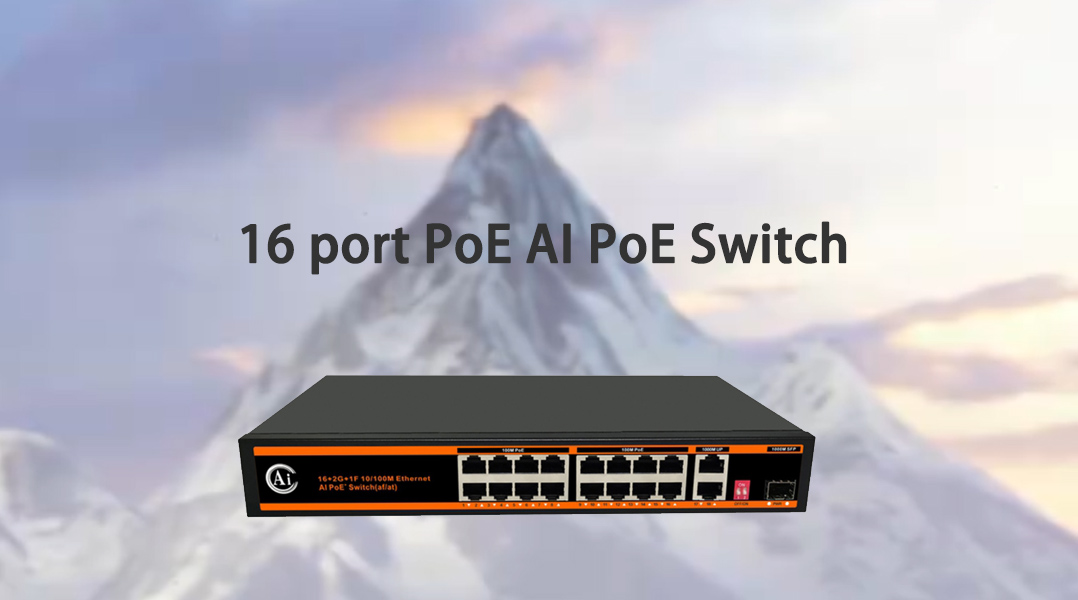As an enthusiast and practitioner of network technology, I have accumulated a lot of experience in network optimization. Today, I will share all these valuable insights with everyone.

Choose the appropriate POE switch
Following standards: POE technology has standards such as IEEE 802.3af, 802.3at, and 802.3bt, with different standards corresponding to different power levels and transmission distances. When choosing a POE switch, we must ensure that it meets the corresponding standards in order to ensure stable power supply and data transmission of the device. Just like when I was configuring a network for a small office before, I initially chose a POE switch that didn't meet the standards, but ended up with insufficient power supply and unstable data transmission. Later, I switched to a switch that met the standards, and the problem was easily solved.
Number of ports and power budget: Determine the number of ports and power budget for the switch based on actual needs. If there are many POE devices to be connected, it is necessary to choose a switch with sufficient port quantity and sufficient total power budget. For example, if there are many IP cameras in a monitoring system, it is necessary to calculate the power requirements of each camera and choose a switch that can meet the simultaneous power supply and operation of all cameras. Otherwise, there may be an awkward situation where some cameras cannot work properly.
Device compatibility: It is also important to check the POE compatibility of the device to ensure that the connected device can receive power correctly from the network cable. Some old devices may not support POE power supply or have poor compatibility with POE, so special attention should be paid to avoid damaging the device.
Optimize network cabling
Choose high-quality cables: High quality Ethernet cables can reduce signal attenuation and improve data transmission speed. Let's not choose some low-quality cables just to save some money, otherwise the network will lag and drop, which will be a big trouble. I have a friend who bought a cheap network cable to save money, but the network speed was as slow as a snail. Later, he changed the cable and the speed immediately improved.
Reasonable wiring planning: Design a reasonable network topology structure to reduce network congestion and latency. When wiring, try to avoid cables that are too long, tangled, and crossed, as this can reduce signal interference. At the same time, the location of switches should be arranged reasonably according to the distribution and usage of devices, so that network signals can be efficiently transmitted.
Configure switch parameters
Enable QoS function: POE switches generally have QoS (Quality of Service) function, which can prioritize processing specific types of network traffic, such as video conferencing, online gaming, and other applications that require high real-time performance. This ensures the smooth operation of critical business without any lag or disconnection due to network congestion. When I am playing games, I am particularly grateful that the switch at home has enabled QoS function, otherwise I would always be trapped by network latency.
Setting up VLANs: VLANs (Virtual Local Area Networks) can divide the network into multiple logical subnets, isolate different business traffic, and improve network security and efficiency. For example, companies can isolate the networks of their finance department from those of other departments to prevent data breaches and cyber attacks. The method of setting up VLANs is not difficult, just make simple settings in the configuration interface of the switch.
Power management and monitoring
Reasonably allocate power: It is necessary to allocate the total power budget of POE switches reasonably to ensure that each port can provide sufficient power. When connecting devices, it is necessary to arrange the use of ports reasonably according to the power requirements of the device, to avoid situations where one port is overloaded while other ports are idle.
Remote monitoring: Use remote monitoring tools to monitor the power status and network performance of devices in order to detect and solve problems in a timely manner. Nowadays, many POE switches support remote management and monitoring functions. We can check the working status, port traffic, device connection status, etc. of the switch anytime and anywhere through the network. Once problems are found, we can take timely measures to deal with them and avoid the problem from expanding.
Regular maintenance and updates
Cleaning and Inspection: Regularly clean and inspect POE switches and network devices to ensure good heat dissipation and secure interface connections. Long term use of equipment may accumulate dust on the surface, affecting heat dissipation and ultimately impacting the performance and lifespan of the device. So, every once in a while, wipe the equipment with a clean cloth and check if the interface is loose. This is a good habit.
Firmware update: Follow the official website of the switch manufacturer to update the firmware of the switch in a timely manner. Firmware updates can fix known vulnerabilities, enhance device performance and security. Just like mobile system updates, firmware updates for switches can also make devices run more stably and efficiently.
Alright, the above is the POE switch optimization tips I have shared with you. I hope it can be helpful to everyone. If you have any questions during the network optimization process, please feel free to private message me at any time. Let's discuss and exchange ideas together.
